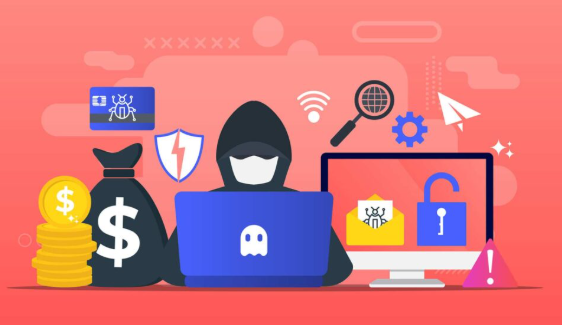The most prevalent and the most severe risk to which businesses are exposed is the phishing attack. The attacks are in such a way that they deceive employees into revealing delicate information like passwords, money details or even opening whole business network to them. As cybercriminals get advances in 2025, understanding on the prevention of phishing attacks is of essence to any firm dealing with electronic communications, customer data or financial transactions.
In this guide we shall discuss the ultimate measures you can take to avert phishing attacks, the most common clues of phishing and the tools you will need to defend your business.
What Is Phishing Attack?
Phishing attack is a type of the cyber crime in which criminals impersonate them as honest institutions or people to defraud targets to expose confidential information. Those attacks are usually presented in the guise of a false e-mail, SMS (sometimes known as smishing), or even a telephone call (vishing). The aim of the attacker is usually stealing credentials, planting malware or getting illegitimate access to company resources.
Ordinary Kinds of Phishing:
Email phishing: False emails that are posing as a trusted source.
Spear phishing: A very targeted trick of individuals against particular workers.
Whaling: Messaging targeting executives or upper tier staff.
Clone phishing: Copying of a real legitimate email that contains malevolent attachments or URLs.
Business email compromise (BEC): A deceiver pretends to be a top executive and fool employees into sending funds or confidential data.
Reasons Why Phishing Attacks can be so dangerous to businesses
Phishing scams do not only happen regularly; They cost a lot of money and they are devastating. Cybersecurity Ventures reported that in 2025, phishing will make up 80 percent of the security breach and amount to billions in losses around the globe.
This is why phishing could bring your business to knees:
-Data breaches which make customer and employee data visible.
-Financial losses because of fraudulent payment of wire transfer or even because of paying invoices.
-Damage of reputation leading to customer lost trust.
-Violation of compliance and the legal effects, in particular, in the case of exposure of sensitive data.
The Guide on How to Stop Phishing against Your Company
1. Trainee and Awareness of Employees
Training your staff is one of the most efficient methods to prevent phishing attacks. The employees are to be trained on the methods of identifying phishing emails, suspicious emails, and spoof websites.
Awareness tips:
-Carry out frequent phishing tests.
-Give real phishing email examples.
-Make it a point to advise workers to communicate whatever looks suspicious.
-Encourage a culture of not blaming anybody in the reporting of errors.
2. Multi-Factor Authentication (MFA) should be used
Even when a password is stolen, multi-factor authentication brings an additional security measure that makes it difficult to penetrate the system.
MFA commonly entails one-off passcode to a mobile phone or biometric authentication. MFA should also be enabled to all the platforms on which businesses have to rely:
-Email accounts
-Admin dashboards
-Collaboration and cloud storage applications
3. Install the Email Protection and Anti-spam Programs
Use of advanced email filtering systems will be able to identify and filter phishing emails before they get to the inbox. These tools scan the behavior of the senders, the URL patterns and attachments.
Recommended tools:
-Microsoft defender Office 365
-Proofpoint Essentials
-Mimecast Secure Email Gateway
Such filters will be able to identify suspicious messages and may even put them in quarantine.
4. Maintenance of All Software and Systems
A good number of phishing attacks are tailored to attack known vulnerable systems. Reported vulnerabilities can soon be stopped by patching the software regularly, and updating the software, particularly the email clients, browsers and antivirus tools can ensure that the security vulnerabilities are sealed.
Whenever possible, always have automatic updates so as to get timely protection.
5. Secure Email Gateway Use
The purpose of secure email gateway (SEG) is to protect your email system. It analyses trail and received emails, blocks forged areas and also provides encryption.
Remote teams or cloud-first companies are particularly being served by cloud-based solutions.
6. Confirm Strange Requests Handling Them by Hand Alone
Train your staff on the need to check any urgent or unexpected request particularly where it involves money transfer or sensitive data.
Methods include:
-Using a familiar phone number to contact the requests.
-Checking the request with a manager or work fellow.
-Never going ahead thinking that one has been told something through the email.
This is critical particularly in Business Email Compromise (BEC) attacks.
7. Apply Domain-Based Message Authentication
DMARC, SPF, and DKIM are email authentication protocols that allow them to ensure that your attackers cannot use your domain to generate phishing emails. Installing these, guarantees that mails which purport to contain information that is on your behalf has been authorized.
You can enable them by checking the DNS records and emails service provider documentation.
Indicators of a Phishing Message
Employees ought to be trained to be on the lookout of such red flags:
-Exigent or threatening Eugue
-Domains that are misspelled or weird addresses of the senders
-Uncharacteristic downloading or attachment downloads
-The links that do not correspond to the actual address of the site
-Demands of login information or Payments
Conclusion
In 2025, phishing attacks will be the primary business cyber risk. Nonetheless, through a combination of the correct educational training, security tools, and policies you can highly decrease the risk to your company. Your business will be well equipped to take proactive steps, multi-factor authentication, email filtering and conduct security training sessions regularly in order to be on top of phishing scams.
You don not need expensive tools to protect your organization, but consistency and vigilance.

